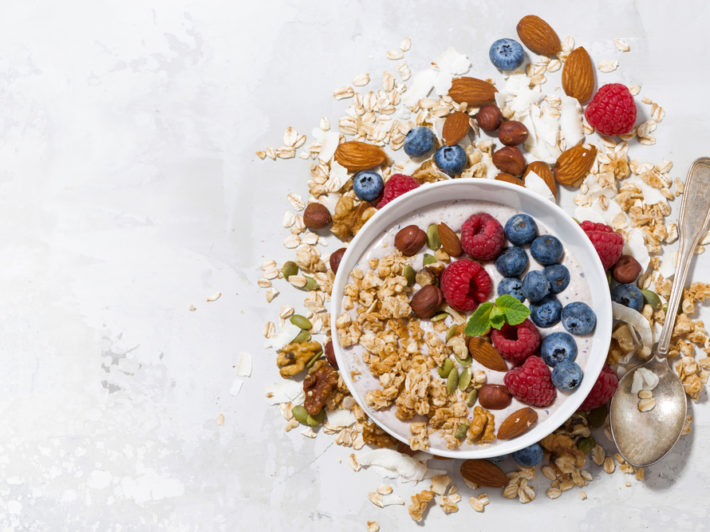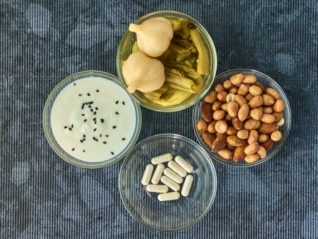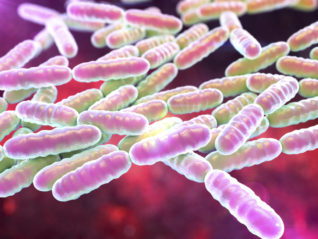
by Lewis Chang, PhD
Series Part 2: An Overview on Prebiotics
This multi-part series will help you understand what prebiotics are, what they do, and how they may improve the health of your patients. Based on published scientific literature, this series will also clarify common misconceptions surrounding prebiotics and summarize clinical evidence of specific ingredients with prebiotic properties.
Series Part 2:
(A) Regarding Fiber vs. Prebiotics (B) Regarding IMOs
What are fibers?
Fibers, starches and sugars are actually all carbohydrates. What separate them are the number of sugar units and how these sugar units are chemically bonded together. Starches are made of many glucose units bonded together but the chemical bonds are easily broken down by digestive enzymes. Fibers are primarily made of many sugar units bonded together, but the chemical bonds resist digestive enzymes in the upper gastrointestinal tract. Therefore, fibers remain mostly intact and reach large intestine, where they are fermented by the resident microbiota.
A 2001 report issued by the Institute of Medicine (IOM) of the National Academies can help us understand the definition of fiber. IOM defined fiber into 2 categories; dietary fiber and functional fiber. Total fiber is the sum of dietary fiber and functional fiber.
Is there a difference between prebiotics and fibers?
As described in the first part of the series (Part One: Overview on Prebiotics), a prebiotic (1) resists digestion in the upper gastrointestinal tract, (2) is fermented by the microbiota in the large intestine, and (3) selectively stimulates the growth and/or activity of the gastrointestinal microbiota, thus conferring benefits upon host health.2 A prebiotic meets all 3 criteria above, but some fibers only meet the first 2 criteria but not the third. Therefore, all prebiotics can be classed as fibers, but not all fibers are prebiotics.
What are isomalto-oligosaccharides (IMOs)?
IMOs are a mixture of short-chain carbohydrates (i.e., oligosaccharides) that has digestion-resistant property. The majority of IMOs consists of 3 to 6 glucose units linked together by digestion-resistant α1-6 linkages. IMOs meet the definition of fiber.
IMOs are found in nature such as honey but also in various fermented foods such as miso, sake, and soy sauce.3 IMOs can also be commercially produced from starch (e.g., tapioca) via enzymatic reactions.
Properties of IMOs
Research has demonstrated that IMOs exerts health benefits in humans. The properties of IMOs are summarized below.
Well known in Asia (especially Japan) as “functional oligosaccharides” for decades, IMOs are becoming a promising ingredient in the prebiotic market in the Western countries.
References
- Turner ND, Lupton JR. Dietary fiber. Adv Nutr 2011;2:151-2.
- Gibson GR, Scott, K.P., Rastall, R.A., Touhy, K.M., Hotchkiss, A., Dubert-Ferrandon, A., Gareau,M., Murphy,E.F., Saulnier, D., Loh, G., Macfarlane, S., Delzenne, N., Ringel, Y., Kozianowski, G., Dickman, R., Lenoir-Wijnkoop, I., Walker, C., Buddington,R. Dietary prebiotics: Current status and new definition. Journal of Food Science and Technology Bulletin: Functional Foods 2010;7:1-19.
- Goffin D, Delzenne N, Blecker C, Hanon E, Deroanne C, Paquot M. Will isomalto-oligosaccharides, a well-established functional food in Asia, break through the European and American market? The status of knowledge on these prebiotics. Crit Rev Food Sci Nutr 2011;51:394-409.
- Kaneko T, Yokoyama A, Suzuki M. Digestibility characteristics of isomaltooligosaccharides in comparison with several saccharides using the rat jejunum loop method. Biosci Biotechnol Biochem 1995;59:1190-4.
- Gibson GR, Probert HM, Loo JV, Rastall RA, Roberfroid MB. Dietary modulation of the human colonic microbiota: updating the concept of prebiotics. Nutr Res Rev 2004;17:259-75.
- Kaneko T, Kohmoto T, Kikuchi H, Shiota M, Iino H, MItsuoka T. Effects of isomaltooligosaccharides with different degrees of polymerization on human fecal Bifidobacteria. Biosci Biotechnol Biochem 1994;58:2288-90.
- Kohmoto T, Fukui F, Takaku H, Machida Y, Arai M, MItsuoka T. Effect of isomalto-oligosaccharides on human fecal flora. Bifidobacteria Microflora 1988;7:61-9.
- Chen HL, Lu YH, Lin JJ, Ko LY. Effects of isomalto-oligosaccharides on bowel functions and indicators of nutritional status in constipated elderly men. J Am Coll Nutr 2001;20:44-9.
- Wang HF, Lim PS, Kao MD, Chan EC, Lin LC, Wang NP. Use of isomalto-oligosaccharide in the treatment of lipid profiles and constipation in hemodialysis patients. J Ren Nutr 2001;11:73-9.
- Sheng GE, Dong-Lian CAI, Wang L. Determination of glycemic index of xylitol and isooligosccharide. Chin J Clin Nutr 2006;14:235-7.







